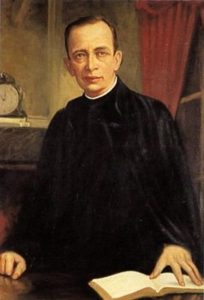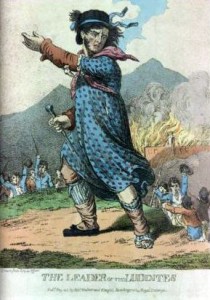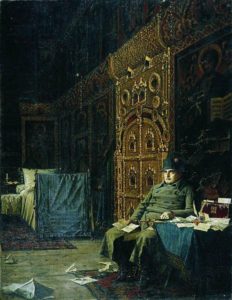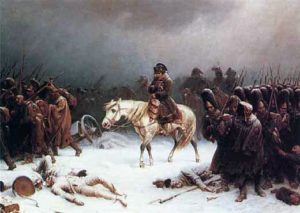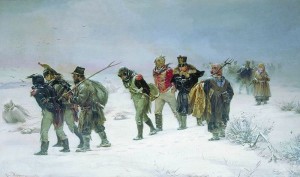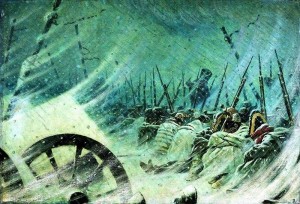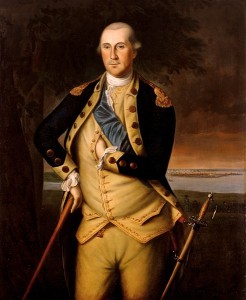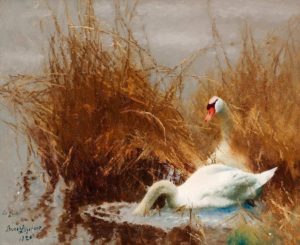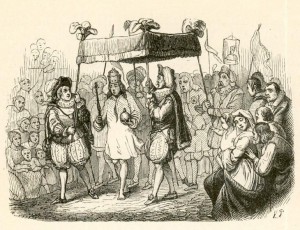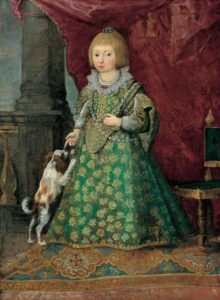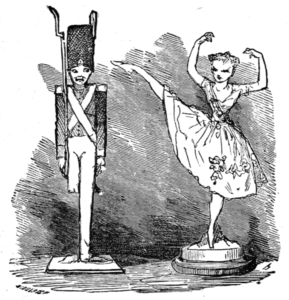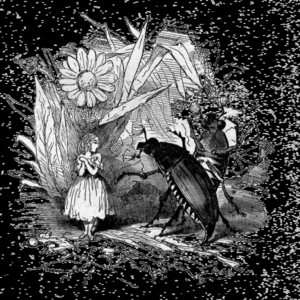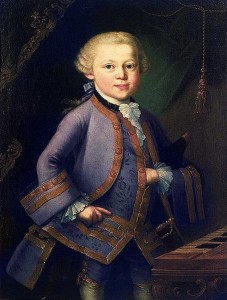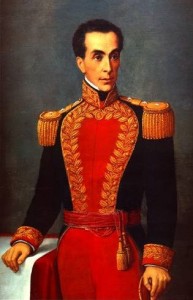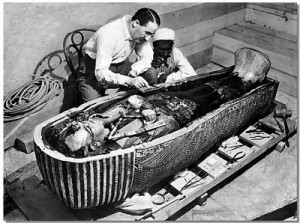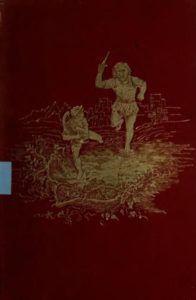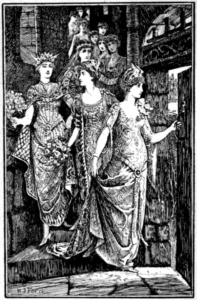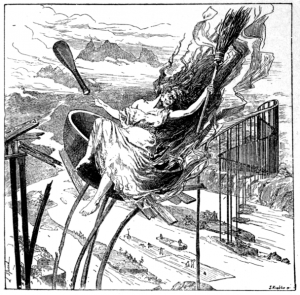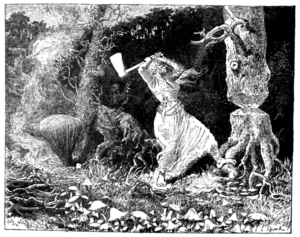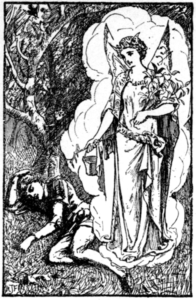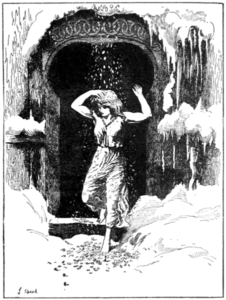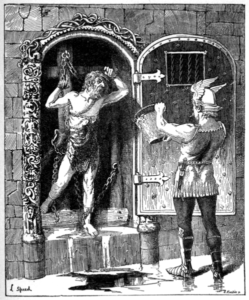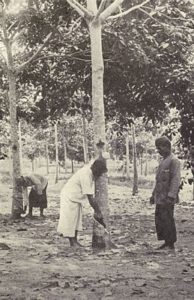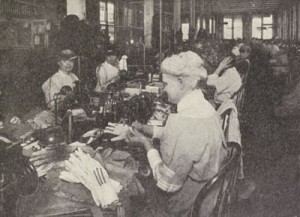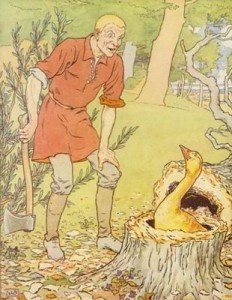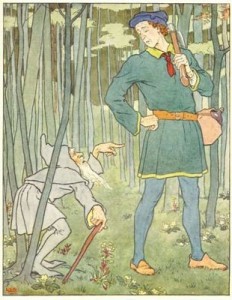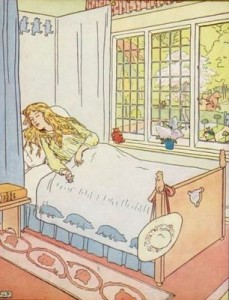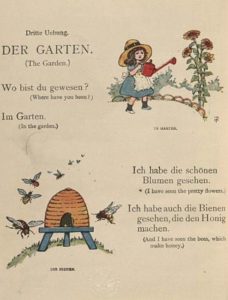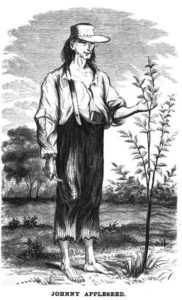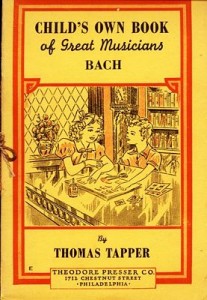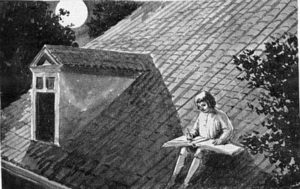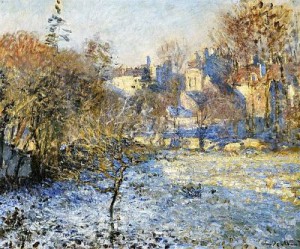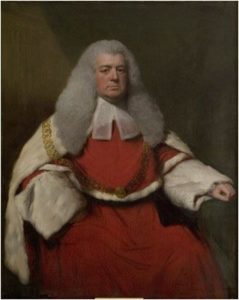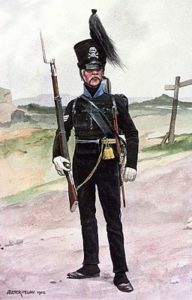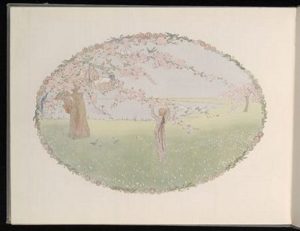Summary: This is the second of five books of short stories about G. K. Chesterton’s fictional detective, first published in 1914. Father Brown is a short, nondescript Catholic Priest with shapeless clothes and a large umbrella who has an uncanny insight into human evil. His methods, unlike those of his near contemporary Sherlock Holmes, although based on observation of details often unnoticed by others, tended to be intuitive rather than deductive. Although clearly devout, he always emphasizes rationality: despite his religiousness and his belief in God and miracles, he manages to see the perfectly ordinary, natural explanation of the problem. He is a devout, educated and “civilized” clergyman, who is totally familiar with contemporary and secular thought and behavior. His character was thought to be based on Father John O’Connor (1870 – 1952), a parish priest in Bradford, Yorkshire. (Summary by Martin for Librivox)
Through the Fray by G. A. Henty
Ned Sankey is a quick-tempered, strong-willed boy during the Luddite riots in Yorkshire. The happy times at the beginning of the story are soon marred by the death of his father. From there things only get worse. When things take a turn for the worst, how will he respond? (Summary by GabrielleC)
Read this book online, or on your Kindle or other e-reader
Total running time: 8 hours, 20 minutes
14: Committed for Trial, continued
Through Russian Snows by G. A. Henty
There are few campaigns that, either in point of the immense scale upon which it was undertaken, the completeness of its failure, or the enormous loss of life entailed, appeal to the imagination in so great a degree as that of Napoleon against Russia. Fortunately, we have in the narratives of Sir Robert Wilson, British commissioner with the Russian army, and of Count Segur, who was upon Napoleon’s staff, minute descriptions of the events as seen by eye-witnesses, and besides these the campaign has been treated fully by various military writers. I have as usual avoided going into details of horrors and of acts of cruelty and ferocity on both sides, surpassing anything in modern warfare, and have given a mere outline of the operations, with a full account of the stern fight at Smolensk and the terrible struggle at Borodino. I would warn those of my readers who may turn to any of the military works for a further history of the campaign, that the spelling of Russian places and names varies so greatly in the accounts of different writers, that sometimes it is difficult to believe that the same person or town is meant, and even in the narratives by Sir Robert Wilson, and by Lord Cathcart, our ambassador at St. Petersburg, who was in constant communication with him, scarcely a name will be found similarly spelt. I mention this, as otherwise much confusion might be caused by those who may compare my story with some of these recognized authorities, or follow the incidents of the campaign upon maps of Russia. (Introduction by G.A.Henty)
Read this book online or on your Kindle or other e-reader
Chapter 2: Before the Justices
Chapter 11: With the Russian Army
Chapter 13: With the Read Guard
Presidents Day
George Washington and His Hatchet
Lydia Darragh Saves General Washington
Famous Men of Modern Times: George Washington
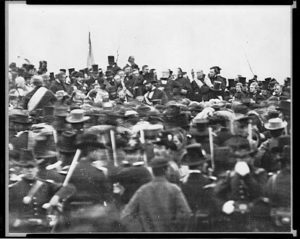
Famous Men of Modern Times: Abraham Lincoln
Franz Joseph Haydn: The Story of the Choir Boy who became a Great Composer
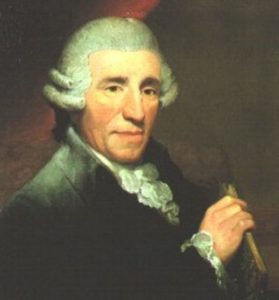
Read this book and see the illustrations online OR Follow along on your Kindle
Franz Joseph Haydn: The Story of the Choir Boy who became a Great Composer (left click to play or right click “save as” to download)
This story is an excerpt from the book Stories of Great Composers for Children by Thomas Tapper. Download the entire book as a zipped file OR Subscribe to the entire book in iTunes
George Washington Carver
This American Adventure old time radio program dramatizes the life of American Adventure George Washington Carver.
The Yellow Fairy Book by Andrew Lang
Andrew Lang?s Fairy Books or Andrew Lang?s ?Coloured? Fairy Books are a twelve-book series of fairy tale collections. Although Andrew Lang did not collect the stories himself from the oral tradition, the extent of his sources (who had collected them originally), made them an immensely influential collection, especially as he used foreign-language sources, giving many of these tales their first appearance in English. As acknowledged in the prefaces, although Lang himself made most of the selections, his wife and other translators did a large portion of the translating and telling of the actual stories.? (summary from wikipedia)
Read this book online or read it on your Kindle or other e-reader.
Total running time:? 11 hours, 24 minutes
To hear this book, click play in the box below or click on the chapter links.
01 ? The Cat and the Mouse in Partnership
04 ? Story of the Emperor?s New Clothes
07 ? The Dragon and His Grandmother
12 ? The Giants and the Herd-boy
15 ? How Six Men travelled through the Wide World
19 ? Alphege, or the Green Monkey
22 ? The Boy and the Wolves, or the Broken Promise
27 ? The Witch and Her Servants
29 ? The Flower Queen?s Daughter
31 ? The Snow-daughter and the Fire-son
33 ? The Death of the Sun-hero
36 ? The Story of Big Klaus and Little Klaus
39 ? How To Tell A True Princess
Mozart: The Story of a Little Boy and his Sister Who Gave Concerts by Thomas Tapper
Read this book and see the illustrations online OR Follow along on your Kindle
Mozart: The Story of a Little Boy and his Sister who gave Concerts (left click to play or right click “save as” to download)
This story is an excerpt from the book Stories of Great Composers for Children by Thomas Tapper. Download the entire book as a zipped file OR Subscribe to the entire book in iTunes
Listen to Mozart’s music
The following several selections are recorded by Jon Sayles on classical guitar.? For more of his beautiful recordings of both classical and early/renaissance music,? visit his website.
Simon Bolivar
King Tut’s Tomb
The Red Fairy Book by Andrew Lang
Read this book online or follow along on your Kindle or e-reader.
Total running time: 12 hours, 22 minutes
To hear this book, click play in the box below or click on the chapter links.
01 ? The Twelve Dancing Princesses
04 ? The Death of Koshchei the Deathless
05 ? The Black Thief and Knight of the Glen
15 ? The Three Princesses of Whiteland
Handel: The Story of a Little Boy who practiced in an Attic by Thomas Tapper
Read this book and see the illustrations online OR Follow along on your Kindle
Handel: The Little Boy who practiced in an Attic (left click to play or right click “save as” to download)
This story is an excerpt from the book Stories of Great Composers for Children by Thomas Tapper. Download the entire book as a zipped file OR Subscribe to the entire book in iTunes
Laura Ingalls Wilder
The Long Winter presented by Hallmark Playhouse
The Long Winter is set in South Dakota during the severe winter of 1880-1881. It is the 6th book in the Little House on the Prairie series.
Makers of Many Things by Eva March Tappen
Summary: How are friction matches made? How do rags and trees become paper? Who makes the dishes on our tables? Published in 1916, this children’s book explains the origins of everyday items in an entertaining and informative way. There are plenty of illustrations, so please feel free to read along with the online etext: Makers of Many Things. (Summary by Kara for Librivox)
Read this book and see the illustrations online, or Follow along on your Kindle or other e-reader.
To hear this book, click on the chapter titles or click play in the box below.
Preface the The Little Friction Match
How Rags and Trees become Paper
From Goose Quills to Fountain Pens and Lead Pencils
The Golden Goose Book by Leslie Brooke
Read this book and view the delightful illustrations online OR Follow along on your Kindle or other e-reader.
Download as a zipped file
Subscribe in iTunes
Internet Archive Page
Total running time: 32 minutes
To hear this book, click on the chapter links or press play in the box below.
My Very First Little German Book
An adorable picture book with 29 little lessons in German. Learn many simple and useful phrases, such as “How big the sea is!” and “Have you ever been to the farm?” Summary by Kara for Librivox
Read this book and see the illustrations online
My Very First Little German Book (left click to listen online or right click “save as” to download)
OR Click play in the box below to listen to this book.
Johnny Appleseed
This episode from the old time radio program American Adventure tells the story of Johnny Appleseed.
Johann Sebastian Bach: The Story of the Boy who Sang in the Streets by Thomas Tapper
Read this book and view the illustrations online, OR Follow along on your Kindle
Johann Sebastian Bach: The Story of the Boy who Sang in the Streets (left click to listen or Right Click “save as” to download)
This story is from the book “Stories of Great Composers for Children” by Thomas Tapper. Subscribe to the whole book in iTunes or Download the entire book as a zipped file.
Listen to Bach’s music:
The following several selections are recorded by Jon Sayles on classical guitar.? For more of his beautiful recordings of both classical and early/renaissance music, including several more Bach selections, visit his website.
Break Forth, O Beauteous Heavenly Light (from the Christmas Oratorio)
Now Let us to the Bagpipe’s Sound from the Peasant’s Cantata
Goldberg Variations, Number 2,? Number 10, Number 18
Listen to the Brandenburg Concerto No. 2 on Classics for Kids
More resources for studying Bach:
For more stories about Bach, including the podcasts “About Johann Sebastian Bach”, “The Sons of Johann Sebastian Bach”, “What’s a Concerto” and “More about the Brandenburg Concertos”, visit Classics for Kids.
Classics for Kids activity sheet about Bach and the Brandenburg Concertos
CurrClick has many resources for the study of Bach and classical music.
Grammar Land by M. L. Nesbitt
Summary: In this charming 1877 book of grammar instruction for children, we are introduced to the nine parts of speech and learn about the rules that govern them in Grammar-Land.
“Judge Grammar is far mightier than any Fairy Queen, for he rules over real kings and queens down here in Matter-of-fact-land. Our kings and queens have all to obey Judge Grammar?s laws, or else they would talk what is called bad grammar; and then, even their own subjects would laugh at them, and would say: ?Poor things!
They are funny fellows, these nine Parts-of-Speech. You will find out by-and-by which you like best amongst them all. There is rich Mr. Noun, and his useful friend Pronoun; little ragged Article, and talkative Adjective; busy Dr. Verb, and Adverb; perky Preposition, convenient Conjunction, and that tiresome Interjection, the oddest of them all.” Summary for Librivox
Total running time:? 2 hours, 46 minutes
04? Serjeant Parsing’s Visit to Schoolroom-shire
06? Mr. Adjective Tried for Stealing
07? The Quarrel Between Mr. Pronoun and Mr. Adjective, and Little Interjection
09? Dr. Verb’s Three Tenses, and Number, and Persons
10? Serjeant Parsing in Schoolroom-Shire Again
14? Prepositions Govern the Objective Case
Our Old Nursery Rhymes by Alfred Moffat
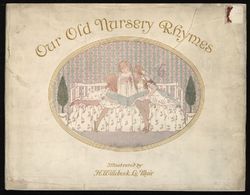
Summary: Our Old Nursery Rhymes (1911) is a book of 30 of folkloric songs arranged by Alfred Moffat and beautifully illustrated by H. Willebeck Le Mair. You and your child can listen and sing along as you read the facsimile edition online from the Children?s Digital Library.
These nursery rhymes were performed by 17 talented university student musicians who are sisters in the Sigma Alpha Iota International Music Fraternity for Women at California State University-Stanislaus. The project was conceived as an opportunity to offer service to the music-loving community around the world and to children everywhere. [Summary written by Dennis Sayers for Librivox].
View the lovely illustrations and music in the Children’s Library e-text.
Our Old Nursery Rhymes (left click to listen online, right click “save as” to download)
OR Click play in the box below to listen


